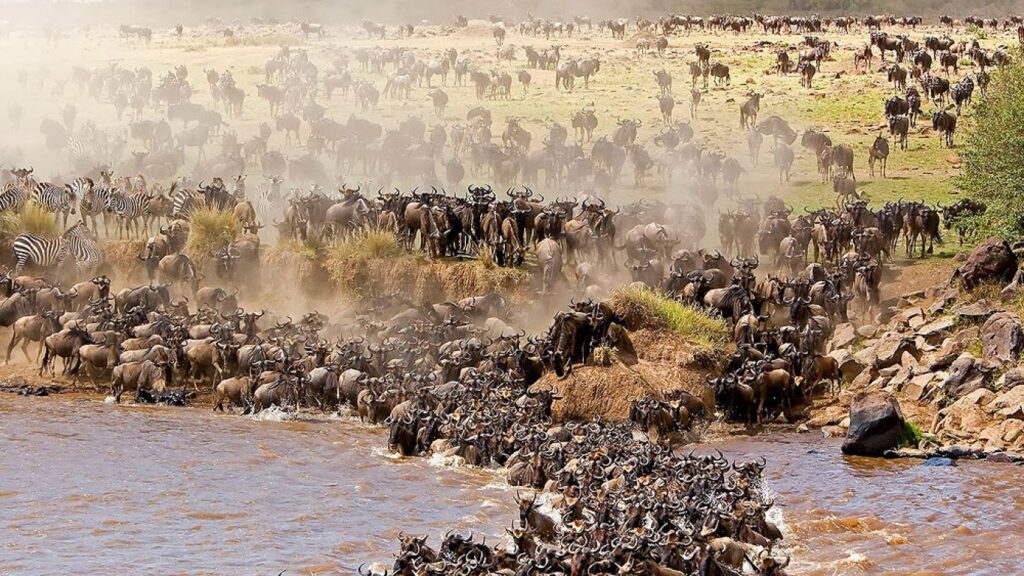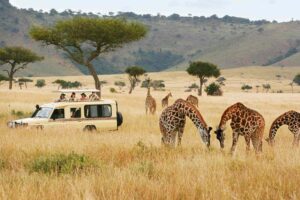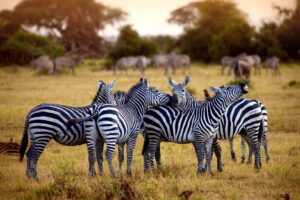The Great migration is the movement of over 1.5 million wildebeest, along with hundreds of thousands of zebras and gazelles, across the vast plains of East Africa. This cyclical movement occurs between the Serengeti national Park in Tanzania and the Masai Mara in Kenya, driven by the search for fresh grazing lands and quality water.
But when exactly does it happen, and how does this incredible journey unfold? Let’s dive into the details to help you plan your Tanzania safari the right way so that you can witness this phenomenon.
When Does the Great Migration Happen?
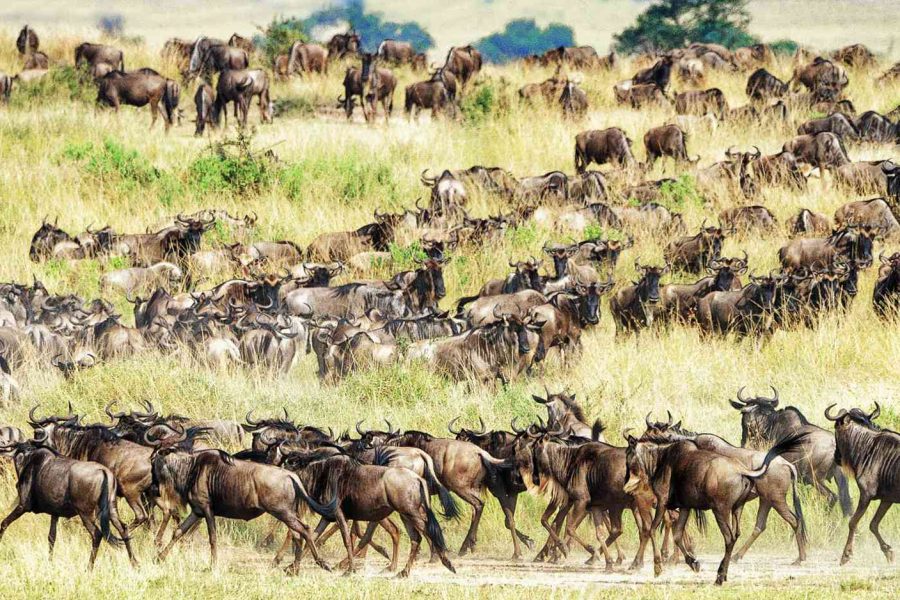
The Great Migration is not a process, but it is a system. This is an ongoing, non stop year-round event, but we can break down its key phases based on months of the year;
January – March: Calving Season (Southern Serengeti)
This is the birthing season where approximately over 500,000 wildebeest calves are born within a short period. The lush grasses of the southern Serengeti provide the perfect environment for the new life of babies wildebeests, but this is the best time for predators such as lions and hyenas as they are always nearby, waiting for an opportunity, making this as one of the best time to visit south Serengeti.
April – May: The Journey to North Begins (through Central Serengeti)
As the rains start to fade, the herds with their grown babies begin their long trek northwards. This period sees large columns of wildebeest moving through the central Serengeti which create a lot of interactions with predators along the way. This is the best season to visit the central serengeti.
June – July: Grumeti & Mara River Crossings (Western Serengeti)
One of the most interesting parts of the migration occurs as the herds of wildebeests reach the Grumeti River and later the Mara River. The crossings are perilous, with crocodiles lurking in the waters and predators like lions and leopards are waiting at the riverbanks to catch their meal. This is a peak and perfect time for safari if you want to witness nature with your naked eyes.
August – October: Grazing Season (Masai Mara, Kenya)
After surviving the river crossings at Grumeti and Mara River, they spread out across the Masai Mara in Kenya, enjoying the lush grasses before their return journey to Serengeti south begins.
November – December: Return to the Serengeti (Tanzania)
With the onset of the short rains, the herds start moving back into the Serengeti national Park in Tanzania through the eastern part of the park to complete the cycle and prepare for another calving season on the south serengeti.
How Does the Great Migration Happen?
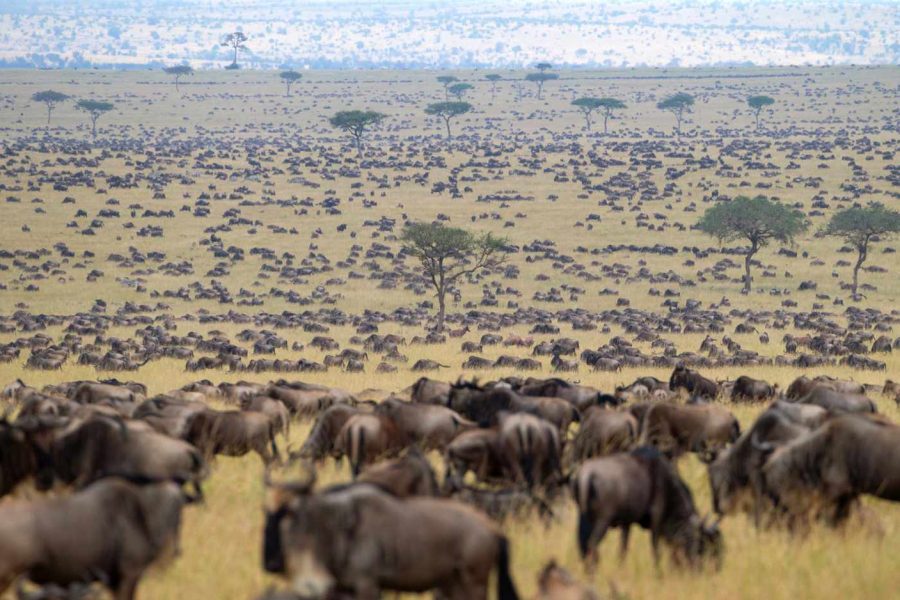
The Great Migration is primarily driven by rainfall patterns and the availability of grazing land as these animals look for fresh and quality grasses. However there are several factors that influence this movement like Predators, weather and their natural behaviour.
Wildebeest move in vast herds, relying on collective decision-making rather than a single leader. Zebras often accompany them, offering extra protection as they have better eyesight to spot predators.
Best Time to Witness the Great Migration
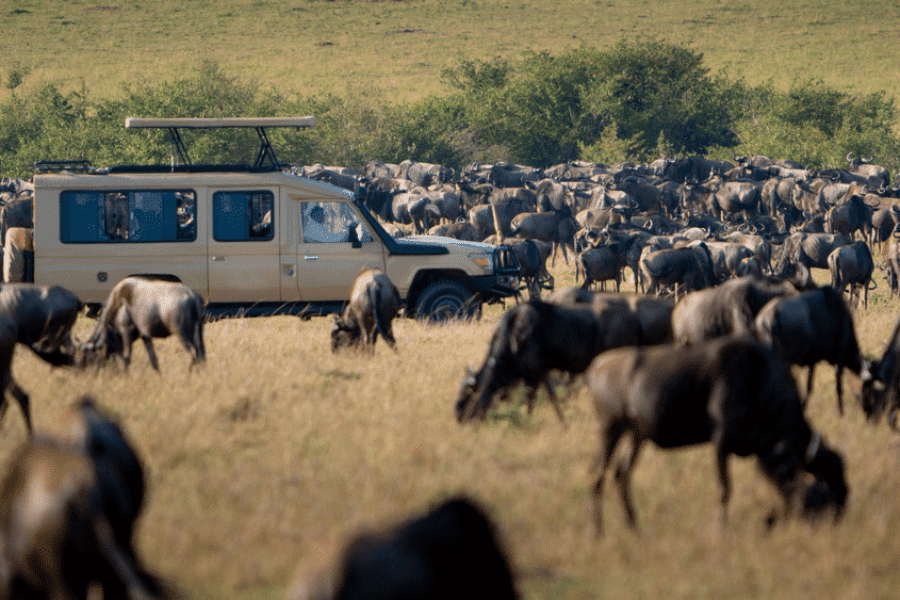
For those travelers who are planning a safari in Tanzania to witness this breathtaking event, the best times depend on what part of the migration you want to see:
January – March: Best for witnessing calving season in the Serengeti (Ndutu, South Serengeti). You will have an opportunity to watch the predators like lions attacking their prey.
June – July: Ideal for watching the dramatic Grumeti and Mara River crossings. This is the peak and famous part of Serengeti Safari. Most tourists want to witness this phenomenon and they can wait even 3 days to see it happen.
Though you won’t find the great migration on other days, you can still have the best Safari experience in Serengeti. Serengeti has a huge number of wildlife all year round, you won’t even feel that you missed to watch the great migration.

